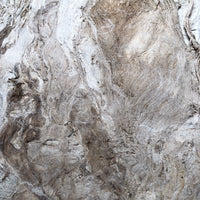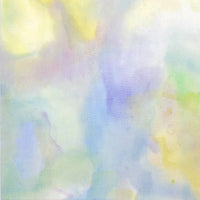Last Updated on: December 23th, 2025
| Contents Differences in Ink Colors: How They're Made |
What is Sumi Ink?
In Japanese, the Kanji character of black is written as 黒 and the four dots at the bottom represent fire as how the soot is fired and produced.
While 墨, Sumi (black ink) is made by kneading animal glue and soot that is produced by burning oil or pinewoods, the character for Sumi is a combination of 黒 (black) and 土 (earth). The basic method of making Sumi ink has not changed much since ancient times. However, the ingredients such as animal glue have changed over time, so the Sumi ink used today in Japan has developed its formulation over a long period to suit the climate and the environment.
Differences in Ink Colors: How They're Made
The color and shade of Sumi ink vary depending on the raw materials and the method of firing them. I would like to begin by explaining the two types of Sumi called Yuen-boku (oil soot ink) and Shoen-boku (pine soot ink). Let's get started with the characteristics of each type.
◾Yuen (Oil Soot)
【Raw Material】Mainly mineral oils and vegetable oils derived from rapeseed, paulownia, sesame, etc. (liquid raw materials)
【Method of Extracting Soot】Wick burning method (manual burning) or machine burning
※Particle size of the soot is determined by the thickness of the wick.
【Characteristics of Soot】 Aggregate of hard, uniform soot particles
【Particle Size】Small (15-80 nm)
【Sumi Ink Color】Glossy, elegant black
◾Shoen (Pine Soot)
【Raw Material】 Pinewood, etc.
【Method of Extracting Soot】 Direct burning method (incomplete combustion)
※Particle size of the soot varies depending on the distance from the burning point.
【Characteristics of Soot】 Aggregate of soft, agglomerated soot particles.
【Particle Size】Mixture of small and large particles (30-400 nm)
【Sumi Ink Color】Rich black/Variable shades of black
※The shade changes drastically over time.
Sumi Color and Soot Particle Size
・Fine particles ... Reddish Black
・Slightly large particles are mixed ... Brownish Black
・Large particles are mixed … Purplish & Dark Bluish Black
・Almost large particles ... Bluish Black
・Large particles mixed with ash ... Bluish Sumi Color called Seiboku Moreover, feel free to refer to the following article for an explanation on the coloration of Sumi ink.
| View SUMI INKSTICKS products |
Ko-boku (Vintage Sumi Ink)
It is said that the older the Sumi gets, the better it is, which is why the Sumi called "Ko-boku" (meaning old ink in Japanese) has been considered highly valued. The aging process of the animal glue and the natural agglomeration of the carbon powder (pine and oil soot) give the ink a deeper and richer color and feel smoother with brush works.
Some of the Ko-boku are very precious and expensive because in order to make the best quality Ko-boku, not only the quality of the original Sumi is important, but it also matters the storage conditions. The amount of animal glue used during the Sumi-making process is a little more than the amount needed for drawing.
Therefore, brand-new ink may feel more viscous. This is because the viscosity of animal glue decreases over the years; during 3 to 5 years since it is made, its viscosity changes drastically, and after a few years from then, the animal glue settles in a good balance for drawing. In the following part, as an art material expert, I would like to introduce Ko-boku which I carefully selected based on the philosophy PIGMENT TOKYO has carried as a specialized art material store since its opening.
I hope you will find interest in the different characteristics of each Sumi ink made from unique raw materials.

Kogaboku Seishoen
People also read
Featured Kogaboku (Vintage Ink Sticks)
Kogaboku is a series of Sumi ink sticks that are more than 30 years old after being manufactured with great care by Boku-Undo Co. The Kogaboku currently available in our store are manufactured around 1955 to 1985.
The aging of Sumi ink and its change over time is described as "withering."
The features of Kogaboku are the color produced by a combination of the original Sumi ink and the original color of soot revealed by withering, and the beauty of the blotting and blurring that gives a three-dimensional effect.
It is the only kind of Sumi ink that we can enjoy the fusion of craftsmanship and the passage of time.
Perhaps you find the beauty of vintage ink sticks by enjoying their rich blackness and fine texture with various expressions in calligraphy and paintings.
Kogaboku Jyun Hyakusenboku
Jyun Hyakusenboku was manufactured in 1979 and is known for being the masterpiece among Kogaboku ink sticks. Hyakusenboku is a series of 100 kinds of carefully selected Sumi ink made under the concept of “one Sumi ink, one unique quality”. Ink sticks that have outstanding beauty were selected among them and produced as "Jyun Hyakusenboku."
This one has a bluish tone to emphasize the transparency of the black ink shade. It is made from pine soot and originated in the Hyakusenboku, so isn't it fun to observe how it will turn into a different color after time?
Kogaboku Senju Sengetsu
Kogaboku Senju Sengetsu was manufactured in 1965-74.
It is a well-withered, high-grade oil soot ink that can be used as both light and dark black ink.
The strong yet elegant black color can only be achieved with old oil soot Sumi ink.
By using different brush strokes, you can create lines that belong only to the ink that has been passed down through time.
Kogaboku Gansui
Kogaboku Gansui was manufactured in 1955.
It is said to be a signature product of the Kogaboku series.
You can feel the quality of Kogaboku with its beautiful blotting and blurring expressions used in both painting and calligraphy.
Kogaboku Seishoen
Manufactured from 1975-84.
This is an excellent piece among bluish Sumi inks.
The ink color has a strong core, and as it ages, it becomes more distinctive.
The blotting gives more three-dimensionality and transparency, and the rich blue ink color is revealed.
You can adjust the effect of the dosa sizing on Washi paper by yourself before drawing with the Sumi ink, and the beauty of shading with the black ink leads to creating more depth to the space in your painting world, whether they are small or large size works.
Kogaboku Eiraku
Manufactured 1975-84.
This ink is made from high-grade oil soot and has a beautiful reddish-brown color with a sense of dignity and clarity.
Both dark and light ink tones are beautiful. It is a color that would look great on large calligraphy and painting works.
Kogaboku Ryukihekiten
Manufactured in 1975-84.
This intermediate-grade oil soot ink is made with animal glue adjusted to absorb easily and bleed beautifully on coarse-fiber Washi paper called Gasenshi.
It works well not only on Kozo paper but also on different types of paper to create an atmospheric expression.
The large stick size also allows you to observe the changes of the Sumi ink in the withering process while the sculpted dragon design on the back is very mesmerizing as well.
*Sorry, this item is no longer available.
We have many kinds of Kogaboku other than the ones introduced here.
| View Kogaboku products |
You can also try out the ink at the manufacturer, Boku-Undo Co.
Boku-Undo Co. is a long-established manufacturer of Sumi ink and calligraphy supplies since 1805 in Nara, an ancient capital with a 1300-year history of Sumi production.
We hope that you will enjoy the world of Sumi ink while viewing the historic shrines and temples that remind you of the Tang Dynasty culture and the historic scenery of Nara.
You would have a once-in-a-lifetime encounter with the ever-changing Kogaboku. It is said that the life span of Sumi ink treated in a good environment is more than 100 years. Why don't you try to “harvest” a Kogaboku, which keeps changing, into your own unique color?
If you want to learn more about how to use sumi ink, check out this blog as well.
Check out our collection of inkstones that go well with the Kogaboku (vintage ink sticks) featured in this article.
Reference (viewed December 19, 2021)
Boku-Undo Corporation
Website https://boku-undo.co.jp/








